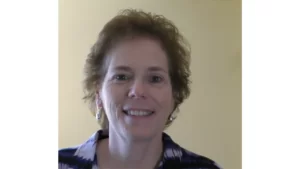Now That You Have a Bible – Let’s Look Inside!
Let me start by saying that some people believe the most important section of the Bible is the New Testament. You can buy just the New Testament. But I believe that if you don’t understand the Old Testament, you will never fully understand the New Testament. What Christians refer to as the Old Testament, the Jewish people call the Tanakh. The content of the Old Testament and the Tanakh are identical. However, the organization of the books is different.
The Jewish Tanakh has twenty-four books that are divided into three sections: Torah (The Law), Nevi’im (The Prophets), and Ketuvim (The Writings). The reason I used the Hebrew words is to show you why this collection of scriptures is called the Tanakh. It is an acronym – TNK; TaNaKh; Tanakh.
By comparison, the Christian Old Testament is composed of thirty-nine books. Although it may seem like books have been added to the original Tanakh, I assure you that that is not the case. The Christian Bible has split the books of Samuel, Kings, and Chronicles into two books called 1st and 2nd Samuel, 1st and 2nd Kings, and 1st and 2nd Chronicles. The Tanakh also has “The Twelve” which contain the writings of the twelve prophets in one book. The Christian Bible gives each of those twelve prophets their own book. The Tanakh combines the books of Ezra and Nehemiah while the Christian Bible separates them.
The books in the Christian Bible are grouped by subject matter: The Pentateuch (Five books), History, Poetry, and the Major and Minor Prophets. You will not find this divided in the scriptures – there are no title pages that say, “The Pentateuch”, it’s just something you learn.
Tanakh – OT Comparison (1) (Free PDF Download)
Also interesting to note – the books are not in chronological order. As you read the various books you will notice different people telling similar stories. Jeremiah, Ezekiel, and Daniel lived during the same time but were of different ages and lived in different areas. Matthew, Luke, and John were disciples of Jesus and walked with him during his ministry. They tell their stories that are often the same.
What’s So Important about the Old Testament Anyway?
You will never fully understanding the New Testament if you don’t understand the Old Testament. The Old Testament is the foretelling of the coming of Jesus. Scholars say that there are around four hundred Old Testament prophecies of the coming Messiah. Here’s a quick example of just a few: The Messiah would be born in Bethlehem (Micah 5:2); born of a virgin and called Immanuel (Isaiah 7:14); He would spend time in Egypt (Hosea 11:1).
The Old Testament also does something called foreshadowing. I think of it as an Old Testament blueprint of what is to come. For a quick example, I’ll use Passover. The Jewish people were slaves in Egypt when God used Moses to confront Pharaoh. The Egyptians endure many plagues, the final one being the death of the firstborn. God tells the Jews to slaughter a lamb and put the blood on the doorpost of their houses so that death will Passover. Passover occurred on the 14th of Abib (Jewish month). Jesus, the Lamb of God, was crucified on the 14th of Abib 1500 years later. The infamous “Last Supper” is the Passover celebration. At some point, I will go into depth on this but hopefully, you get the idea.
Another reason to understand the Old Testament is because the New Testament authors all did! They were all Jewish men who knew the Tanakh. If you use a bible with a paragraph reference system, you will see that many New Testament subjects are linked to Old Testament scriptures. Until I understood the basics of the Tanakh, I did not understand the following from Matthew 22:34-40:
The Greatest Commandment
34 Hearing that Jesus had silenced the Sadducees, the Pharisees got together. 35 One of them, an expert in the law, tested him with this question: 36 “Teacher, which is the greatest commandment in the Law?”
37 Jesus replied: “‘Love the Lord your God with all your heart and with all your soul and with all your mind.’ 38 This is the first and greatest commandment. 39 And the second is like it: ‘Love your neighbor as yourself.’ 40 All the Law and the Prophets hang on these two commandments.”(NIV)
Jesus is referring to The Law (Torah) and the Prophets (Nevi’im), meaning the Tanakh collection of The Twelve (Prophets). As I mentioned above, that is what they called those collections of writings. In other words, Jesus summed up the major theme in almost all of scripture: Love God and do what he says, and love your neighbor as yourself. I have seen numerous searches by Christians seeking to understand what Jesus meant when he said The Law and The Prophets. We need to have some basic understanding of the Old Testament.
The New Testament
The New Testament begins with the Gospel (good news) – that is the books of Matthew, Mark, Luke, and John. Next is the Book of Acts which is generally known as the Acts of the Apostles, followed by the thirteen books written by Paul, also known as epistles (letters), the book of Hebrews (author uncertain), seven general letters, and the book of Revelation.
Concordance:
The last thing I’m going to discuss is the concordance. Not all Bibles will have one, it depends on the one you purchased. A concordance is generally found at the end of the Bible and is an abbreviated version of a full concordance. A Bible Concordance is a list of every word found in the Bible in alphabetical order along with its definition and scripture reference. Many Bibles offer a concordance of popular words and scripture references usually without the definition of the word.
Now that you’ve looked inside, the next blog will answer the question – “Where do I start?”



